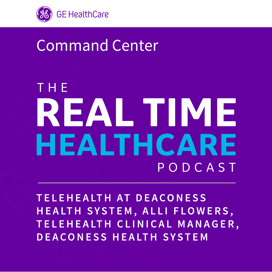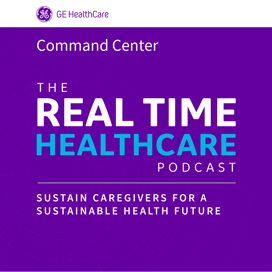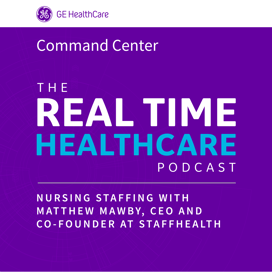#42 - User Interface with Ensues' Co-Founder and CEO Mitra Sangroula
Sep 2 · 14:48 min
In this Episode:
In this podcast, Jeff Terry, is joined by Mitra Sangroula, the founder and CEO of Ensue, which is a UI company. They’ll discuss UI end user experiences, enterprise level applications, and many more insights.
Jeff Terry:
Hello and welcome. I'm Jeff Terry, delighted to be joined today by Mitra Sangroula, who's the founder and CEO of Ensue, which is a UI company. Hi Mitra.
Mitra Sangroula:
Hi everyone. Hi Jeff.
Jeff Terry:
Good to see you, man. Hey so yeah, let's jump into us. Tell us about Ensue.
Mitra Sangroula:
So we founded Ensue because of the need and void of having a different type of data driven applications that don't focus well on the UI end user experiences. We have focused mostly on bringing out the solution on where we actually enable the product owner or the clients to actually see how they can filter out all the noises from the data, and the vast data amount that they have. And what the user experiences and what the user actually expects to see. And what would be a good set of data and what should be a good sort of experience to actually get the most value out of the product. And so, at the end of the day, the end user is able to consume the product properly and also get good results out of it.
Jeff Terry:
And you and I have talked about this before, which everybody can say the same things about the UI. We want a good experience for the data, but sort of the devil's in the details. And say a little more particularly about this notion that your specialty and your firm's specialty is UI for apps that are dealing with complex data structures, where it's particularly difficult to get just the right data, at just the right moment to the user. I think that's true. So say more about that, if you would.
Mitra Sangroula:
Yeah, definitely. So whenever, because of these days, the enterprise application or any application, the data is vast. Everything is data heavy. And there's always this struggle on what data to actually [inaudible 00:02:05] user. And the app can go through different iterations and you have to also understand from a user's perspective, as well as in all the different variations of users that actually consume it, all their background and how do they actually experience UI, and what sort of data is actually relevant for that particular user in that particular [inaudible 00:02:26]. And so based on that, we work with a backend team or the product owner to actually figure out, kind of go through all the datasets and they kind of figure out the problem of what they actually are trying to solve with all this data that the owners show. And filter out a lot of noise that's not needed and kind of figure out, we don't get too much data or too much information on the user's face right away. And you actually have a path for the user to actually follow and figure out and find those data for them.
Jeff Terry:
Well, and I think that's so key and you mentioned it right, which is having to work with the backend team. Because it's one thing to say, I want this data now, right. Or to know that the user should see this, it should be red. It should be in a tape. But to actually have that data available requires intense coordination with the backend team so that the right information's available, but not too much data to it would hinder performance. And I've seen your team work and I see how closely you're working with the back, to make the beautiful UI requires intense coordination with the backend team.
Mitra Sangroula:
Yeah, definitely. You can always make things smoother and kind of make like animation [inaudible 00:03:41] here and there, but all the things are actually in the data, right. And the more precise control you have on what data is kind of presented to the actual end user, that's where all the magic is, right? So a very like tight knitted team needs to work on, how do we actually present those data? How do you filter it? How do you kind of create different hierarchies of data that they use and consume on? And also in a lot of cases, the end product is always kind of rigid, right? I mean, you have this like one UI interface where all the data that's shown in and the user is kind of forced to consume it. So there's no way to actually have almost a custom experience for a user.
Mitra Sangroula:
And that's really vital for a lot of enterprise level applications because you have to kind of deal with them everyday, like almost in like every hour of day, or every minute of day, right? So the more you can actually customize or form that app [inaudible 00:04:44] and the UI around the user, the better they're able to consume it. And they're more comfortable consuming as well, right. So with the improvised applications it's always good to actually go more towards giving a bit more customized experience where the user can actually see, okay, I'm in this position. I want to consume these types of data, right. So let me just kind of choose those first, right. But from out-of-the-box, there could be a layout for you if you have like all these data that... The owner kind of like has a mindset, right. Okay. These are the data, maybe this user would use, right. But I think it's up to the user and you, to actually figure out and choose what data that you want for them, right. [inaudible 00:05:27].
Jeff Terry:
And you've also mentioned this thing to me before of like, how do I make it great on the first time they use it and on the hundredth time that they use it? And that's difficult to do because as they get more skill, they want to unpack more of it. But if you put too much there on day one, they won't be comfortable. And so they won't progress. And of course you want to make it feel custom, but it really can't be custom because the software in the end is what the software is. The data that's there is what the data... So stitching that together, I guess, is the art form that you practice.
Mitra Sangroula:
Yeah, definitely. So out of the box, it has to be clean enough and friendly enough and easy enough to kind of navigate to it. You should get all the datasets that you need to kind of get started on day one. But as you get more comfortable with it and you have more use of it, with day-to-day, there's a lot of things that change, right. [inaudible 00:06:21] user experience or what's needed. So kind of adding the ability to actually filter the things that don't have any limits, it's really good because the issue is, with any interface or any kind of data, the TV, any kind of media, there's a lot of filtering that we have to do, right? So our sensors and all that stuff, and there's so many data algorithms.
Mitra Sangroula:
But we always filter out data that we need at that articular time. So the clearer we can make it the easier it is to find those data for that particular time, but that particular [inaudible 00:06:54] that's how the value of the product increases, right. And that's how the usability and outcome also increase. So definitely kind of filtering out all unnecessary data and [inaudible 00:07:05] letting the user actually focus and get to data that they need right away, is almost like a big part of like what we do.
Jeff Terry:
Yeah. And easier said than done, right. So let me ask, obviously, you used to work at a big company, then you went out and founded your own company. And you do some work for our team, which we really appreciate, what inspired you to stand up your own shingle instead of working at big companies?
Mitra Sangroula:
So working with, as a part of a company. [inaudible 00:07:39] so even if we are, working as a separate company, we still feel like we are a part of whatever the team that we work with, right so. But the experience and the expectation and the thing that you can control is different when you are an employee or contractor of a company. But as soon as you kind of move out of it, then you have a bit more of understanding of how things would work better. And so having the UI design team and the UX team, and also the developer team, actually be in sync in under one roof and able to actually have the same mindset of how things are developed and what's the actual vision of how the outcomes should be. If all the teams are aware of that, then the outcome is a lot better than kind of having just the UI team working on something.
Mitra Sangroula:
And there's another individual working on developing all that [inaudible 00:08:30], right. So that kind of led us to kind of creating this team, small team of UI UX experts from the past experience that we had working with different clients. And it was a little bit challenging. I think there's a lot of things that can come up with kind of starting your company, kind of like how to run it. And fortunately we haven't too much of an issue with like resources and like the actual individuals. But like with the turnovers and all that stuff, I mean, you have to be really aware of all the things like management wise, how do we actually deal with that, right. And like all the staffs, they have like different expectations, right?
Mitra Sangroula:
And how do you deal with those expectations and how do you actually encourage them to kind of learn more. Because with any project or anything that you work on these like tight deadlines or something we actually deliver, right. And how do you make it playful? Right. I mean, it's like you'll be working in days and nights, but if you don't enjoy it, if you don't get that gratification of your outcome, what you're doing, then it's like, there's no [inaudible 00:09:37] motivation, and it doesn't [inaudible 00:09:37], right. So we've been kind of fortunate to work with GE HealthCare to actually work on a product that actually has good come out of it. It changes lives and it kind of brings [inaudible 00:09:51] throughout, not just for data or healthcare, it has a lot of connections and a lot of rippling effects that kind of does good to the society. It's always encouraging to kind of work with such projects. So it's been pretty nice.
Jeff Terry:
Well, it's been great to see and watch, and I love the idea of by bringing together people under a separate roof, you're able to really nurture the right capabilities to achieve your vision of UI. So I know we're pushing time, but one other quick question, do you have kind of a key principle of UI or a philosophy of UI that you would offer to the next generation, the person who wants to come behind you and do the same thing?
Mitra Sangroula:
Oh, I would say things change a lot, right. And while you were working on something, I mean, you have all these theories that you learn and what should be the good principles and all that. But as soon as you start working something, a project, and you have an understanding of what the outcomes should be, then your whole... I mean, the theory would all always be there. Do we actually, pull your strings and little bit here and there and kind of make things work, but once you're working on stuff, things change, right? And you have to adapt to it. And the experience that the product owner has, will be quite different than what the end user will have. And it'll be quite different than what the developers would have or designers would have, right. So to actually, almost like it's like a melting pot of all the experiences that comes to your hand and you have kind of sculpt it in a way that you can actually cater to almost all the senses of different users.
Mitra Sangroula:
Right? And so there shouldn't be any [inaudible 00:11:37] boundaries around [inaudible 00:11:39] actually be this way, it always should look this way or this way or like whenever you tag with certain things, then it should always happen. You always have leeway to adjust it slightly. Right? I mean, it shouldn't be too drastic, right? If you have too much of drastic experience, then users obviously kind of go away from the experience. They don't want to use it again and all that stuff, but there's a lot of history of UI UX that you can actually rely on. All our big companies, Google, Apple, and Microsoft. I mean, they have a vast experience of what they've developed and they know what the experience is and what the expectation is, right. And the way they kind of model their design and all that stuff, it's based on human experiences and behaviors.
Mitra Sangroula:
So there's a lot of things that devs can actually look around and get inspiration from. And you should be able to change as needed. And there's also, the final outcome that you build, you can't expect that to live too long, right? I mean, there has to be a lot of changes you have to do in the future. So I mean, you can be like, you're going to be really proud of what you've built now. And it's working perfectly. That's a [inaudible 00:12:50] probably in a month or two months, it'll show signs of how things can be done differently, to adapt to it. So that's why I see with the fields of UI, the change is always there, right? And you should be open to it. And the experience is vital of the end user, as well as the product owner, as with the developer [inaudible 00:13:10] always be working on it. So you should always gather the experience and try to sculpt the product and the UI based on that.
Jeff Terry:
Well, I love that. It's great. Everything's changing, so don't get too comfortable. I really love the emphasis on that while the theory is always there in the background that anything you do goes way beyond UI, right? There's the user, whatever, are they an accountant? Are they a lawyer or are they a nurse? Right. That's that context, the engineers. It makes me think of the military, right? Like, I was a combat engineer. Yeah. There's the artillery. Yeah. There're the cooks. Yeah, there's the mechanics. But if you actually go get in a fight, everybody's there, right? So the discipline has to exist in the construct of the melting pot, where the work happens. And I, again, we're lucky enough to work with you and I see that in how your team works, right. You're part of the team representing your discipline, but deeply in the team.
Mitra Sangroula:
It's like being a small company. [inaudible 00:14:14] hands dirty, right. So pretty much you have [inaudible 00:14:18], every task. So you have to kind of work with everyone together. So it's a little bit of, I guess, a blessing to be able to be in this position to actually be able to work in the team that I have right now, and to be able to work on the product that we have right now.
Jeff Terry:
Awesome. Well, Mitra and Sue, great, thank you for sharing your insights and for joining today. And with that, I will close the podcast.







